

As a parent, you want the best and most enjoyable dental treatment for your child. Therefore here at Empire Dental Center we have pediatrics specialized in working with children; who listens to your child, encourage him and take good care of him to make his visit as pleasant as possible while studying his dental needs in order for him to receive the best care!
Pedodontics is a dental specialty that deals with children 's teeth. The pedodontist is extensively concerned with prevention which includes instructions, consultation, use of fluoride, and practice of oral hygiene. The pedodontist's routine practice deals basically with caries but includes influencing tooth alignment. Lengthy treatment may be required to correct incipient abnormalities in tooth position. Braces or other correctional devices as well. The pedodontist needs patience and a basic knowledge of children 's behavioral patterns, as well as a knowledge of the effects on the mouth of physical and mental diseases.

Regular dental visits are important because they help keep your teeth and gums healthy. You should have a regular dental visit at least every 6 months! Your visit can be either for check-up or for cleaning.
Your dental professional will check for cavities and to see if there is plaque or tartar on your teeth. Plaque is a clear, sticky layer of bacteria. If it is not removed, it can harden and become tartar. You cannot remove tartar with brushing and flossing. If plaque and tartar build up on your teeth, they can cause oral diseases. Next, your gums will be checked. This will be done with a special tool to measure the spaces between your teeth and gums. With healthy gums, the spaces are shallow. When people have gum disease, the spaces may become deeper. The check-up should also include your tongue, throat, face, head, and neck. This is to look for any signs of trouble, swelling or cancer.
Brushing and flossing help clean the plaque from your teeth, but you can't remove tartar at home. During the cleaning, your dental professional will use special tools to remove tartar. This is called scaling. Scaling is to remove plaque and tartar After your teeth are scaled, they may be polished. In most cases, a gritty paste is used for this. It helps remove any surface stains on your teeth. The final step is flossing. Your dental professional will use floss to make sure the areas between your teeth are clean.
Between visits you should take care of your teeth continuously at home:
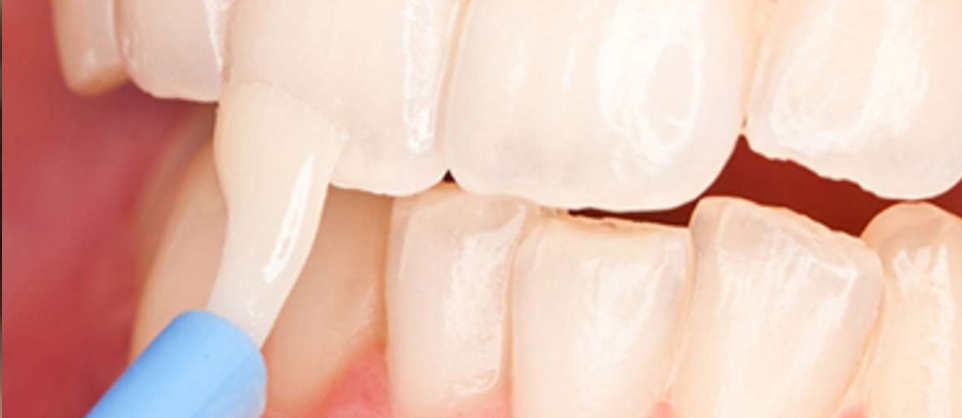
Fluroide is used in order to prevent tooth decay (dental caries), which results in cavities. Most commonly, fluoride is applied topically to the teeth using gels, varnishes, toothpaste/dentifrices or mouth rinse.
Fluoride is said to protect the teeth in two ways:
Fluoride is extremely useful in preventing cavities and making teeth stronger. However, it is much less effective if a cavity has already formed.
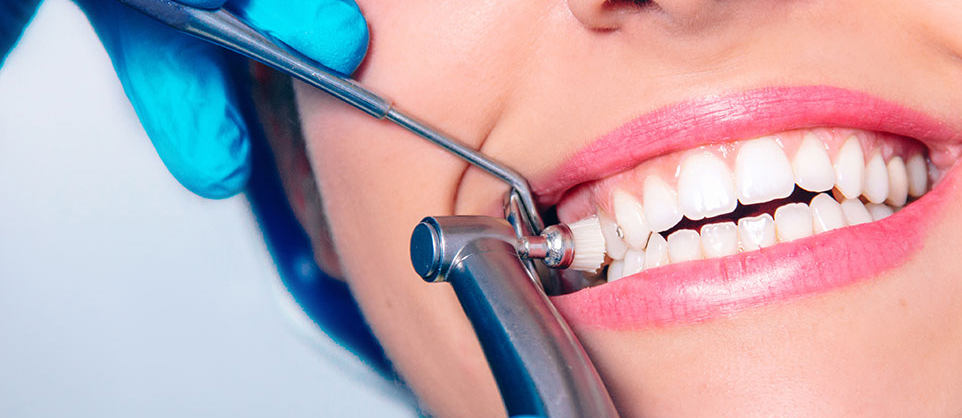
Who doesn't dream of a white perfect smile? Let's discover the benefits of teeth polishing:
In addition to helping you maintain good oral healthcare, a simple cleaning makes your mouth feel really fresh. And one of the reasons for this feeling is from the professional polishing of your teeth to remove plaque, tartar and stain from the tooth surface above the gum line. This standard of good dental hygiene and preventive dentistry called prophylaxis is typically included as a covered benefit with dental insurance along with scaling and removal of hard deposits from the teeth above the gums
We want you to know that gum tissues are particularly sensitive to plaque, the excessive accumulation of which can lead to serious dental problems such as receding and bleeding gums, infections, and possible tooth loss.
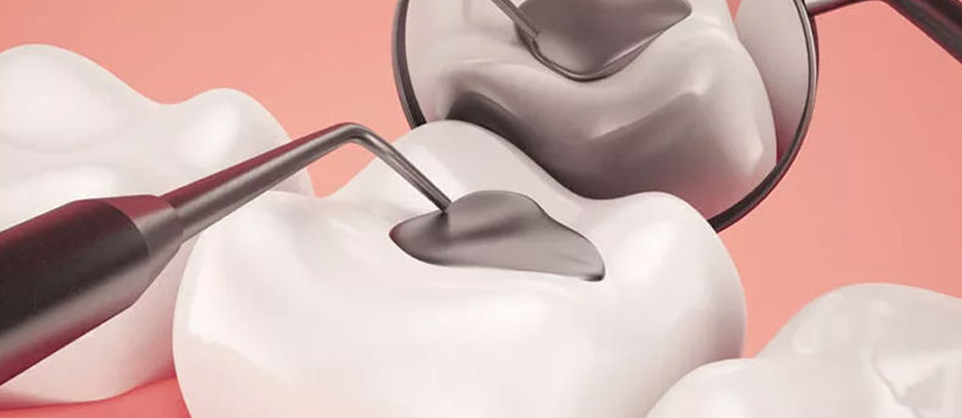
Normal pits and grooves on the chewing surfaces of back teeth can trap food that can't be removed by brushing or washed out by water or saliva. A sealant is a tough, plastic material designed to bond (stick) to tooth enamel. The Problem:
A clear or tooth colored sealants is painted onto the tooth surface to "seal" the pits and grooves and protect against decay. They are generally applied to children’s first permanent back teeth. They can also be useful for adults in certain situations.
Sealants are an excellent way to protect chewing surfaces of teeth from decay. They are a much better financial investment than treating decay after it has started. There are no appropriate alternatives to sealants. If a tooth has decay, it will need a filling or other restoration.
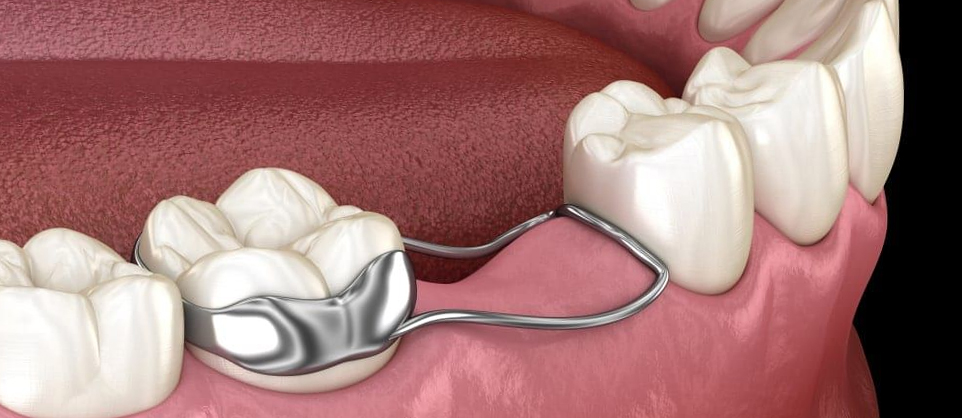
Children may need space maintainers if they lose a tooth early or have a baby (primary) tooth extracted due to dental decay. A space maintainer is an appliance that is custom-made by a dentist or orthodontist in acrylic or metal material. It can be either removable or cemented in a child's mouth. Its purpose is to keep the space open to allow the permanent tooth to erupt and come into place.
Space maintainer; it is a combination of bands and wires designed to hold the remaining teeth in a position that will allow the future permanent tooth to erupt in the proper location.
Prompt placement of a space maintainer will give the permanent tooth the best chance of erupting in the mouth in the correct location. This will minimize orthodontic problems caused by premature loss of a baby tooth.
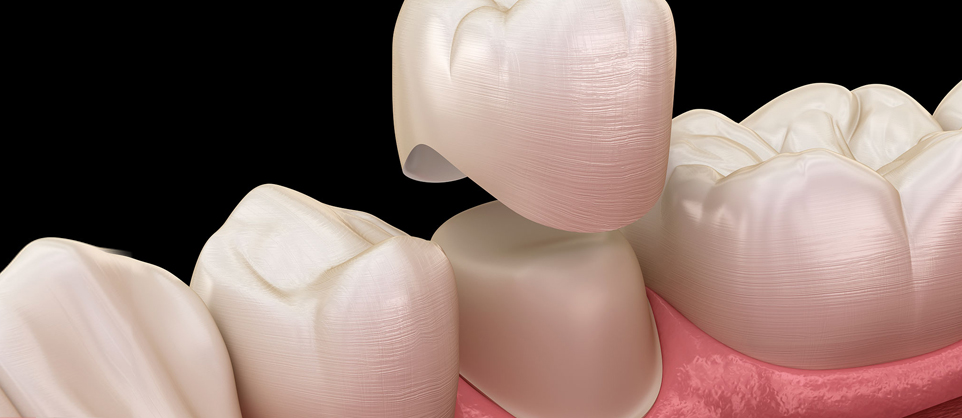
Root canal treatment, also known as endodontic treatment, is a dental procedure in which the diseased or damaged pulp of a tooth is removed and the inside areas are filled and sealed.
Inflamed or infected pulp most often causes a toothache. To relieve the pain and prevent further complications, the tooth may be extracted or saved by root canal treatment. Root canal treatment has become a common dental procedure; million of surgeries are performed every year, with a total success!
The tooth may be sore for several days after filling. Pain relievers may be taken to ease the soreness. The tissues around the tooth may also be irritated. Rinsing the mouth with hot salt water several times a day will help. Chewing on that side of the mouth should be avoided for the first few days after the surgery. A follow-up appointment should be scheduled with the dentist for six months after treatment to make sure the tooth and surrounding structures are healthy.
After a successful surgery and with a successful root canal treatment, the tooth will no longer cause you any pain. However, because it does not contain an internal nerve, it no longer has sensitivity to hot, cold or sweets. So you must receive regular dental check-ups with periodic x rays to avoid further disease in the tooth. The restored tooth with attention and regular dental check ups could last a lifetime!
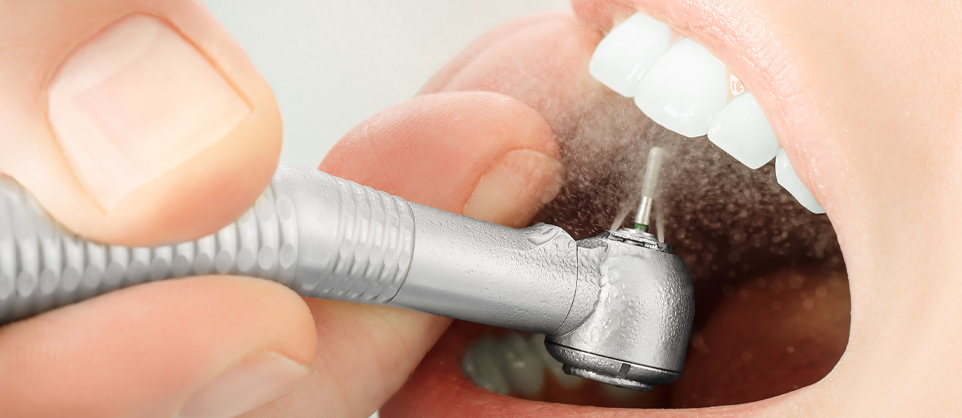
A filling is a way to restore a tooth damaged by decay back to its normal function and shape. When a dentist gives you a filling, he removes the decayed tooth material, cleans the affected area, and then fills the cleaned out cavity with a filling material.
By closing off spaces where bacteria can enter, a filling also helps prevent further decay. Materials used for fillings include gold, porcelain, a composite resin (tooth-colored fillings), and an amalgam.
Only your dentist can detect whether you have a cavity that needs to be filled. During a checkup, your dentist will use a small mirror to examine the surfaces of each tooth.
Anything that looks abnormal will then be closely checked with special instruments. Your dentist may also X-ray your entire mouth or a section of it. The type of treatment your dentist chooses will depend on the extent of damage caused by decay.
No one type of filling is best for everyone. What's right for you will be determined by the extent of the repair, whether you have allergies to certain materials, where in your mouth the filling is needed, and the cost. The different type of fillings are: Gold fillings are made to order in a laboratory and then cemented into place. Gold inlays are well tolerated by gum tissues, and may last more than 20 years. For these reasons, many authorities consider gold the best filling material. However, it is often the most expensive choice and requires multiple visits.
Amalgam (silver) fillings are resistant to wear and relatively inexpensive. However, due to their dark color, they are more noticeable than porcelain or composite restorations and are not usually used in very visible areas, such as front teeth. Composite (plastic) resins are matched to be the same color as your teeth and therefore used where a natural appearance is desired. The ingredients are mixed and placed directly into the cavity, where they harden. Composites may not be the ideal material for large fillings as they may chip or wear over time. They can also become stained from coffee, tea or tobacco, and do not last as long as other types of fillings generally from three to 10 years.
Porcelain fillings are called inlays or onlays and are produced to order in a lab and then bonded to the tooth. They can be matched to the color of the tooth and resist staining. A porcelain restoration generally covers most of the tooth. Their cost is similar to gold.
Copyright © 2021 EMPIRE Dental Center. All rights reserved | Powered by Chrisans Solutions